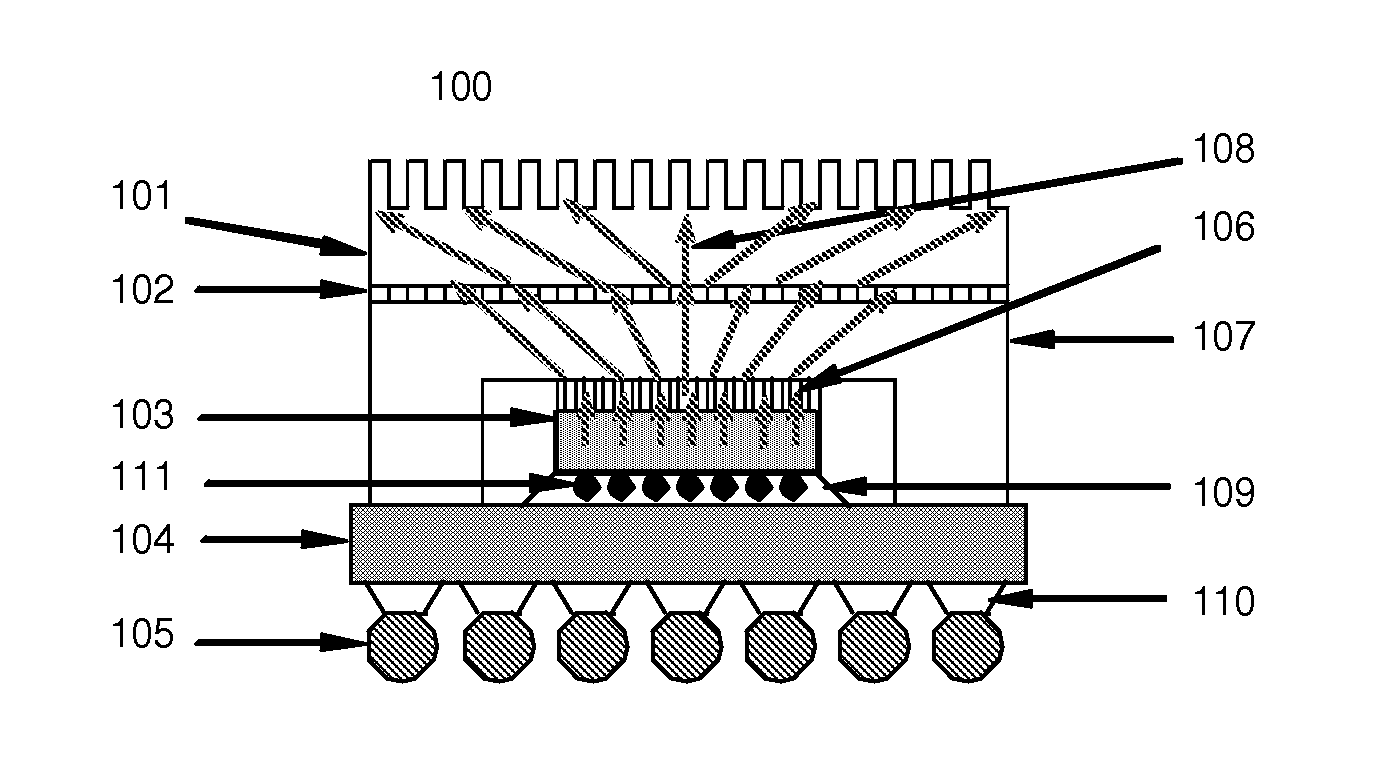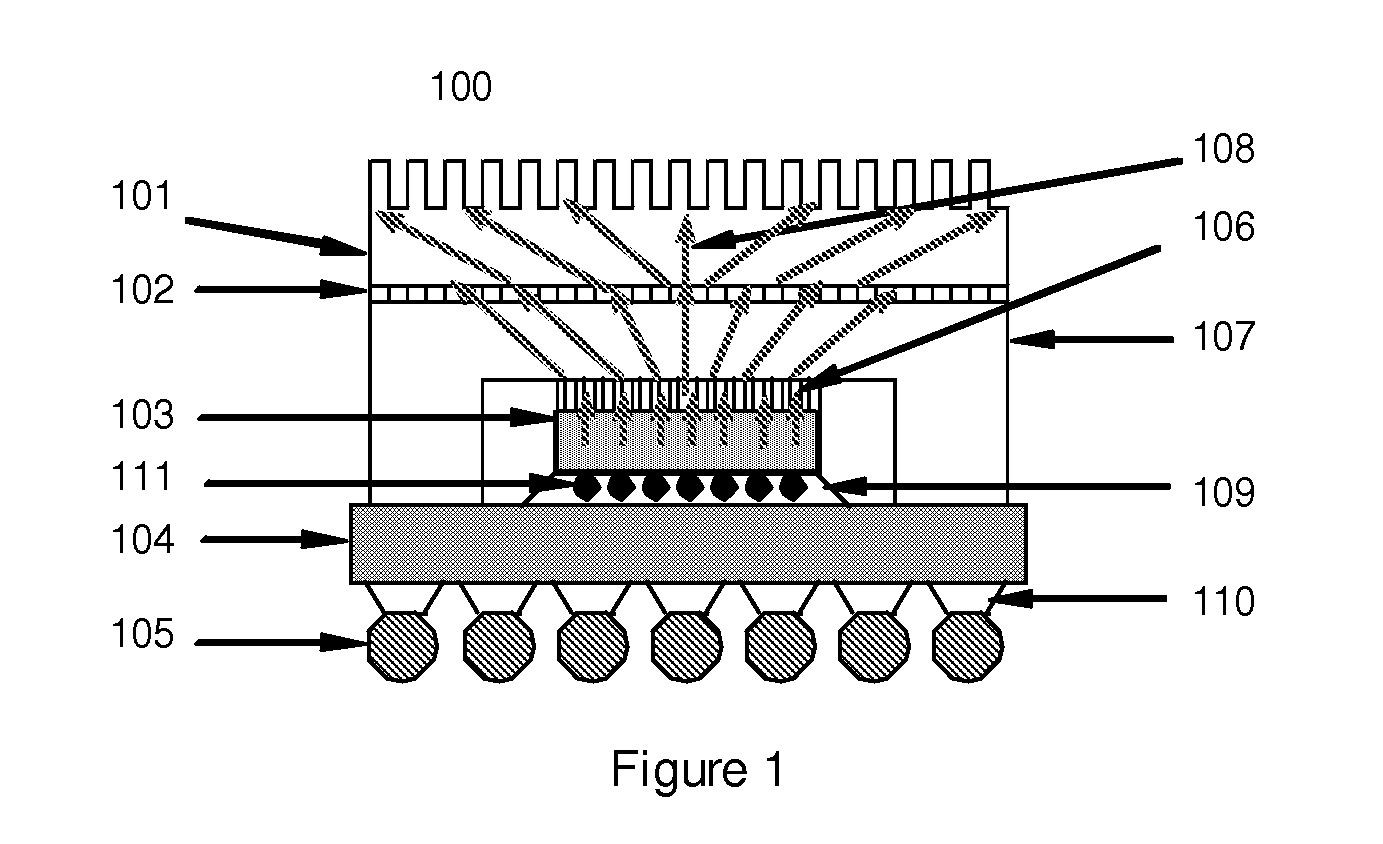Thermally Conductive Grease and Methods and Devices in Which Said Grease is Used
a technology of thermal conductivity and grease, applied in the field of grease, can solve the problems of affecting the performance generating heat in the operation of the (opto)electronic component, and negatively affecting the mean time between failures
- Summary
- Abstract
- Description
- Claims
- Application Information
AI Technical Summary
Benefits of technology
Problems solved by technology
Method used
Image
Examples
example 1
Preparation of Grease
[0082]Grease samples were prepared by mixing the ingredients described in Table 1. To make samples 1, and 2, mixing was performed under ambient conditions for 30 seconds at 3500 rpm in Hauschild centrifugal mixer (dental mixer). For samples 3 and 4, mixing was performed under ambient conditions for 30 seconds in the Hauschild centrifugal mixer, but rpm was not recorded.
TABLE 1Grease Sample Ingredients (amounts are in parts by weight)SampleComparativeSampleComparativeComparativeSampleComparativeIngredient1Sample 23Sample 4Sample 56Sample 7A1)1.71.72.01.71.700A2)1.71.71.41.71.73.43.4A3)2.002.00000A4)02.002.0002.0A5)00002.000A6)000002.00B1)51515151515151B2)26262626262626B3)18181818181818
[0083]Ingredients A1), A2) and A5) were combined in the amounts shown in Table 1 above. Visual determination showed separation, indicating that ingredient A5) was incompatible with ingredients A1) and A2). When comparative sample 5 was made, it was thicker and difficult to work with...
example 2
Evaluation of Viscosity
[0084]Viscosities of the grease samples prepared in example 1 were measured on an Ares rheometer with a 0.6 mm gap on 25 mm diameter probes under steady shear conditions. Average viscosity (Pa·s) was measured at different shear rates initially and again after aging. Samples 1 and 2 were aged at 110° C. for 56 days. Samples 3 and 4 were aged at 85° C. and 85% relative humidity. Sample 3 was aged for 34 days, and sample 4 was aged for 20 days, under these conditions. Sample 5 was aged by heating at 150° C. for 3 days, 8 days, and 25 days. Sample 6 was aged by heating at 150° C. for 3 days and 8 days. For each sample, viscosity was measured initially and then after aging.
TABLE 2Results for Sample 1 and Comparative Sample 2Sample0.5 s−1 initial0.5 s−1 aged1349179792 (comp)30099649
[0085]Sample 1 and comparative sample 2 show upon aging at 110° C., viscosity measured at a shear rate of 0.5 s−1 increased less for the sample that contained a compatible poly(dimethylsi...
example 3
Evaluation of Thermal Performance
[0087]The grease samples prepared in example 1 were evaluated for thermal impedance according to ASTM D5470. Thermal impedance was measured using a Hitachi guarded hot plate at 50° C. An error of + / −˜0.03 was assumed. The results showed that sample 1 had a thermal impedance of 0.057 C-cm2 / W and Comparative Sample 2 had a thermal impedance of 0.053 C-cm2 / W under these test conditions.
PUM
| Property | Measurement | Unit |
|---|---|---|
| particle size | aaaaa | aaaaa |
| particle size | aaaaa | aaaaa |
| molar ratio | aaaaa | aaaaa |
Abstract
Description
Claims
Application Information
 Login to View More
Login to View More - R&D
- Intellectual Property
- Life Sciences
- Materials
- Tech Scout
- Unparalleled Data Quality
- Higher Quality Content
- 60% Fewer Hallucinations
Browse by: Latest US Patents, China's latest patents, Technical Efficacy Thesaurus, Application Domain, Technology Topic, Popular Technical Reports.
© 2025 PatSnap. All rights reserved.Legal|Privacy policy|Modern Slavery Act Transparency Statement|Sitemap|About US| Contact US: help@patsnap.com



